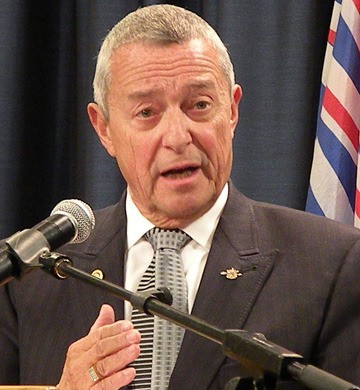The B.C. government will appeal a B.C. Supreme Court ruling ordering a return to 2002 classroom rules, Education Minister Peter Fassbender announced Tuesday.
Fassbender said the latest ruling could potentially cost the B.C. government more than $1 billion, which he called “completely unaffordable for taxpayers.” But the appeal will focus on Justice Susan Griffin’s interpretation of constitutional rights in union negotiations.
“Governments have to be able to govern,” Fassbender said, adding that no other province has has such restrictions on school organization.
“Most importantly, if the real goal is to benefit students, decades of academic research has shown that blankest reductions in class size are of little benefit,” he said.
B.C. Teachers’ Federation president Jim Iker estimated that 6,600 teachers would have to be hired to bring B.C. class sizes up to the Canadian average. In Surrey school district alone, there should be 18 teacher librarians, 19 teacher-counsellors, 51 more specialist education teachers and 80 English language teachers, he said.
“We want to negotiate a deal at the bargaining table,” Iker said. “We hope that the government comes and bargains with us in good faith – that’s so important – but we all know that to achieve an agreement, government has to bring the necessary funding to make that deal happen.”
The dispute revolves around the government’s unilateral removal of class size and support staff rules from the BCTF contract in 2002. In her first ruling in 2011, Griffin gave the government a year to remove the offending legislation and negotiate class size and specialist teacher support as a working condition for teachers.
Griffin’s second ruling came Jan. 28, ordering $2 million in damages to be paid to the BCTF for what she described as bargaining in bad faith, and striking down parts of the latest legislation.
Fassbender said talks over the past year have included class size and specialist support.
“We’ve increased supports for students with special needs, including a 36 per cent increase in the number of full-time education assistants,” he said. “Average class sizes are near historical lows of 19.3 students for kindergarten, 21.5 for grades one to three, 25.7 for grades four to seven, and 23.0 for grades eight to 12. To put that in perspective, in 1970 the average class size was 42.”
Fassbender said the ministry’s “learning improvement fund,” established after Griffin’s first ruling, dedicated $210 million toward the disputed class supports. It funded 500 new teachers, 400 new special education assistants and increased hours for another 7,400 assistants, he said.
NDP education critic Rob Fleming said the government shouldn’t be challenging the court ruling.
“The onus is on the government to put out an olive branch to the teaching profession,” he said.
